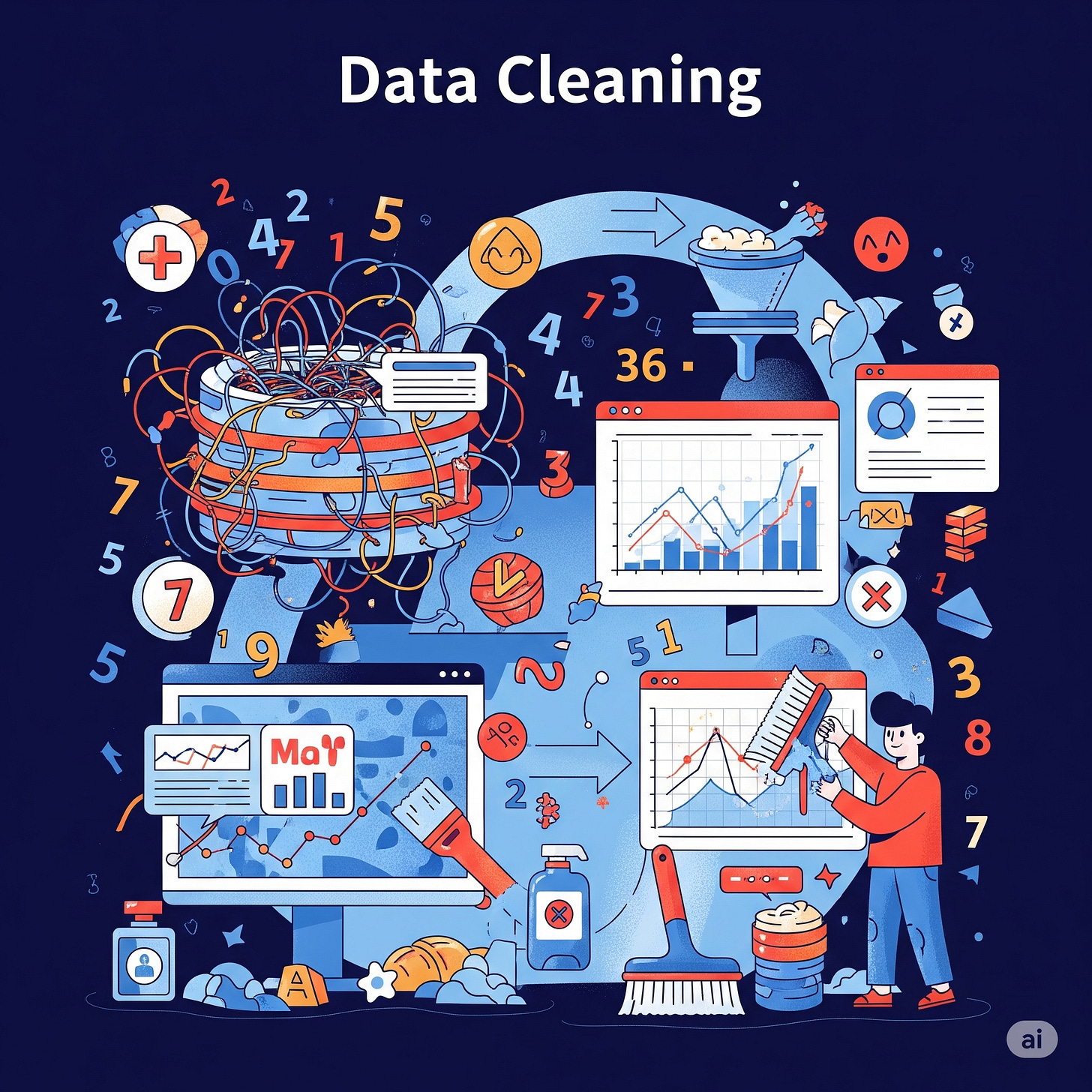The Importance of Data Cleaning and Preprocessing in Data Science
Uncover the hidden truth behind data! Learn why clean, well-prepared data is the critical first step to unlocking accurate insights and driving effective data-driven decisions. 🧹✨
The Importance of Data Cleaning and Preprocessing in Data Science
Imagine building a magnificent house, but starting with a foundation made of loose sand and crumbling bricks. It wouldn't stand for long, right? The same principle applies in the world of Data Science. Your data is the foundation of every analysis, model, and insight. If your data is messy, incomplete, or inconsistent – or as data scientists say, "dirty" – then any conclusions you draw from it will be unreliable, leading to flawed decisions.
At Functioning Media, we often emphasize to our clients that even the most sophisticated algorithms are only as good as the data they consume. This is why Data Cleaning and Preprocessing isn't just a step; it's arguably the most crucial phase in the entire data science workflow. This guide will walk you through why it's so vital and the key practices involved.
Why is Data Cleaning and Preprocessing So Important? 🤔
Data cleaning and preprocessing can take up to 70-80% of a data scientist's time, and for good reason! Its importance cannot be overstated: link
* **Ensures Accuracy:** Dirty data leads to inaccurate analysis and misleading insights. Clean data means reliable results that you can trust to base your decisions on. ✅
* **Improves Model Performance:** Machine learning models learn from the data they are fed. If the data is inconsistent or contains errors, the model will learn those errors, leading to poor predictions and classifications. A clean dataset helps models perform optimally. 🤖
* **Enhances Data Quality:** Preprocessing standardizes data, making it uniform and ready for analysis. This improves the overall quality and consistency of your dataset. 📏
* **Facilitates Better Decision-Making:** When your insights are derived from clean, reliable data, the decisions made based on those insights are more likely to be effective and successful. Smart decisions come from smart data! 💡
* **Saves Time (in the long run):** While it's time-consuming upfront, a thorough cleaning process prevents endless hours of debugging and re-running analyses later due to data errors. Invest now, save later! ⏱️
* **Prevents "Garbage In, Garbage Out" (GIGO):** This classic computing adage perfectly applies to data science. If you feed bad data into your analysis or model, you'll inevitably get bad results. 🗑️➡️📈
**Key Steps in Data Cleaning and Preprocessing:** 🛠️
This phase involves several critical steps to ensure your data is fit for purpose:
**1. Handling Missing Values:**
Data often has gaps. Strategies include:
* **Deletion:** Removing rows or columns with too many missing values (use cautiously to avoid losing valuable data).
* **Imputation:** Filling in missing values using statistical methods (e.g., mean, median, mode) or more advanced techniques.
* *Example:* If a customer's age is missing, you might fill it with the average age of other customers.
**2. Dealing with Duplicate Records:**
Identical rows of data can skew analysis. Identifying and removing duplicates ensures that each observation is unique and doesn't artificially inflate counts or averages. 👯♀️
**3. Correcting Inconsistent Data Formats and Typos:**
Data might be entered in different ways (e.g., "USA", "U.S.A.", "United States"). This involves standardizing entries. Typos also need to be corrected.
* *Example:* Ensuring all dates are in a consistent 'YYYY-MM-DD' format.
**4. Handling Outliers:**Outliers are data points that significantly differ from other observations. They can be legitimate but extreme values, or they might be errors. You need to identify them and decide whether to remove, transform, or keep them. * Example: An unusually high income value in a dataset that needs to be checked for error or handled appropriately. Link
**5. Data Transformation and Standardization:**
Converting data into a format suitable for modeling.
* **Normalization/Scaling:** Adjusting numerical values to a common scale (e.g., bringing all values between 0 and 1). This is vital for many machine learning algorithms.
* **Categorical Encoding:** Converting categorical data (like "Male" or "Female") into numerical representations that models can understand (e.g., "0" or "1").
* *Example:* Converting product categories (Electronics, Apparel) into numerical codes.
**6. Feature Selection:**
Choosing the most relevant variables (features) for your analysis or model. Removing irrelevant features can improve model performance and reduce complexity. 🎯
How Functioning Media Ensures Data Quality for You:
At Functioning Media, we understand that robust data analysis begins with pristine data. Our data experts meticulously clean and preprocess your data, ensuring its accuracy, consistency, and readiness for advanced analysis and model building. We take the "garbage in, garbage out" principle seriously, laying a strong foundation for reliable insights.
In Conclusion: Data cleaning and preprocessing might not be the flashiest part of Data Science, but it is unequivocally the most foundational. It's the silent hero that ensures the integrity of your analysis and the reliability of your insights. Investing time and effort into this crucial step is paramount for any business looking to make truly data-driven decisions and gain a competitive edge. Don't skip the cleaning – your insights depend on it! 🧼📊
Visit functioningmedia.com and subscribe to the newsletter.
#DataCleaning #DataPreprocessing #DataScience #DataQuality #DataAnalytics #MachineLearning #GIGO #DataIntegrity #BestPractices #BigData #FunctioningMedia



